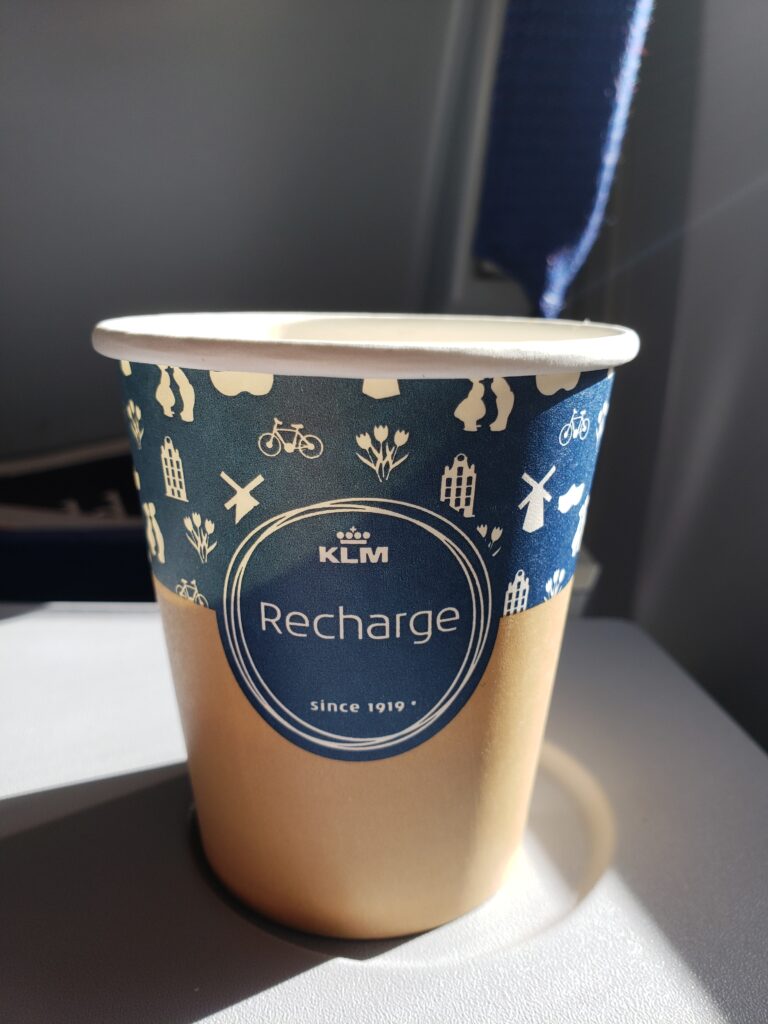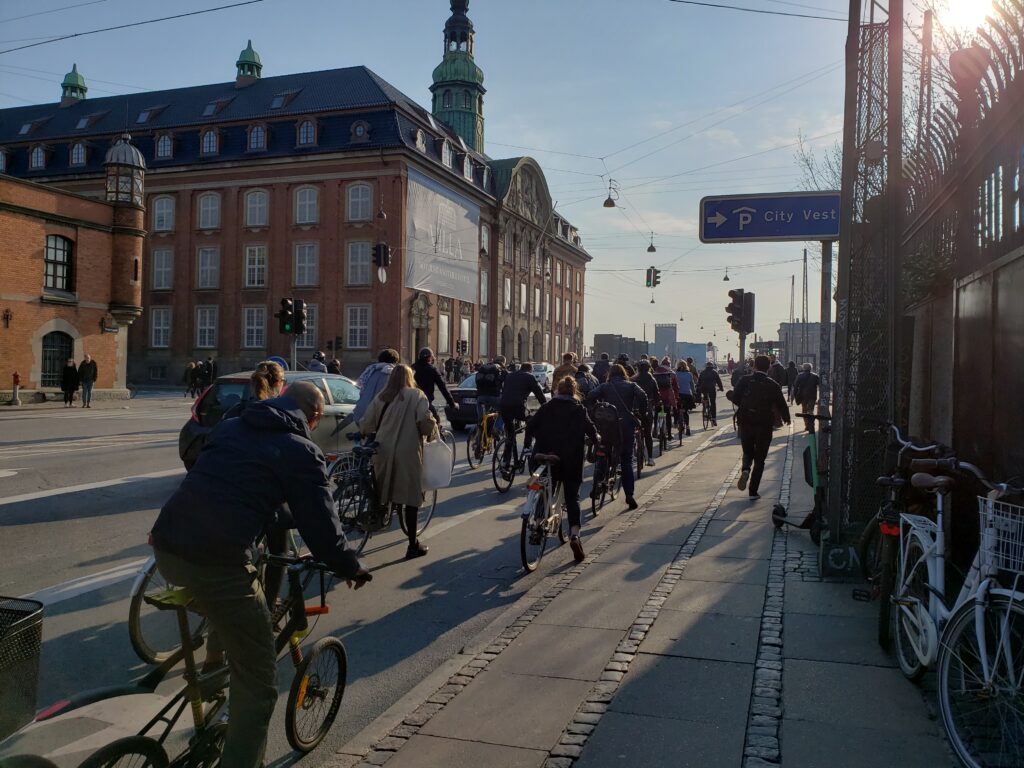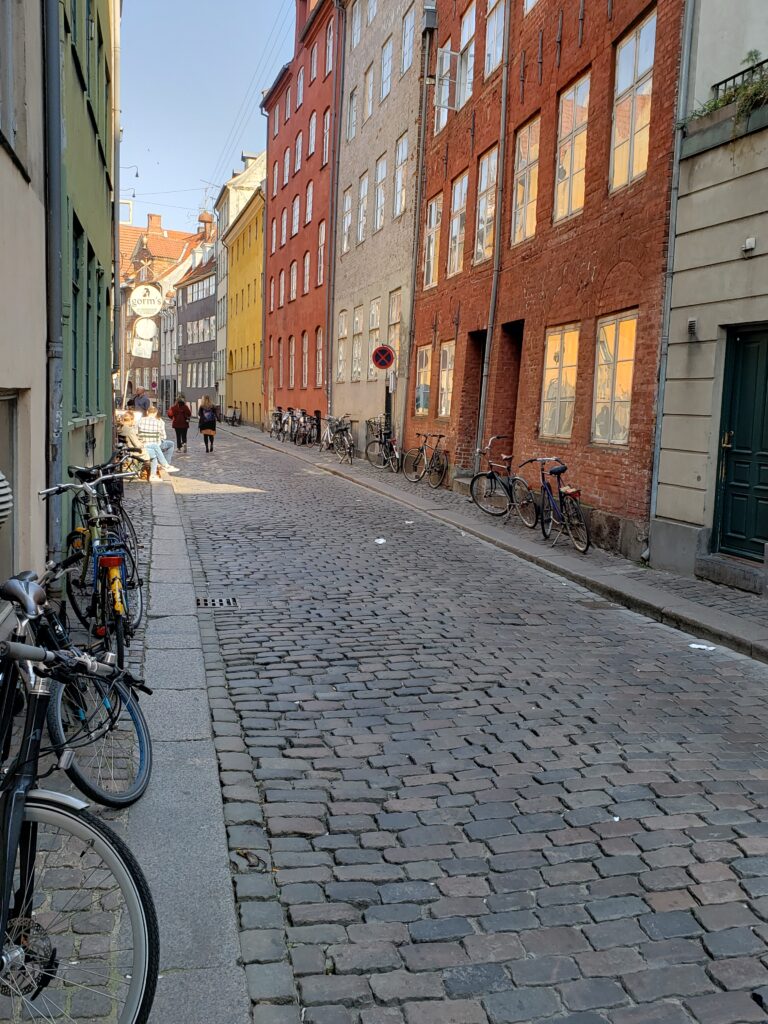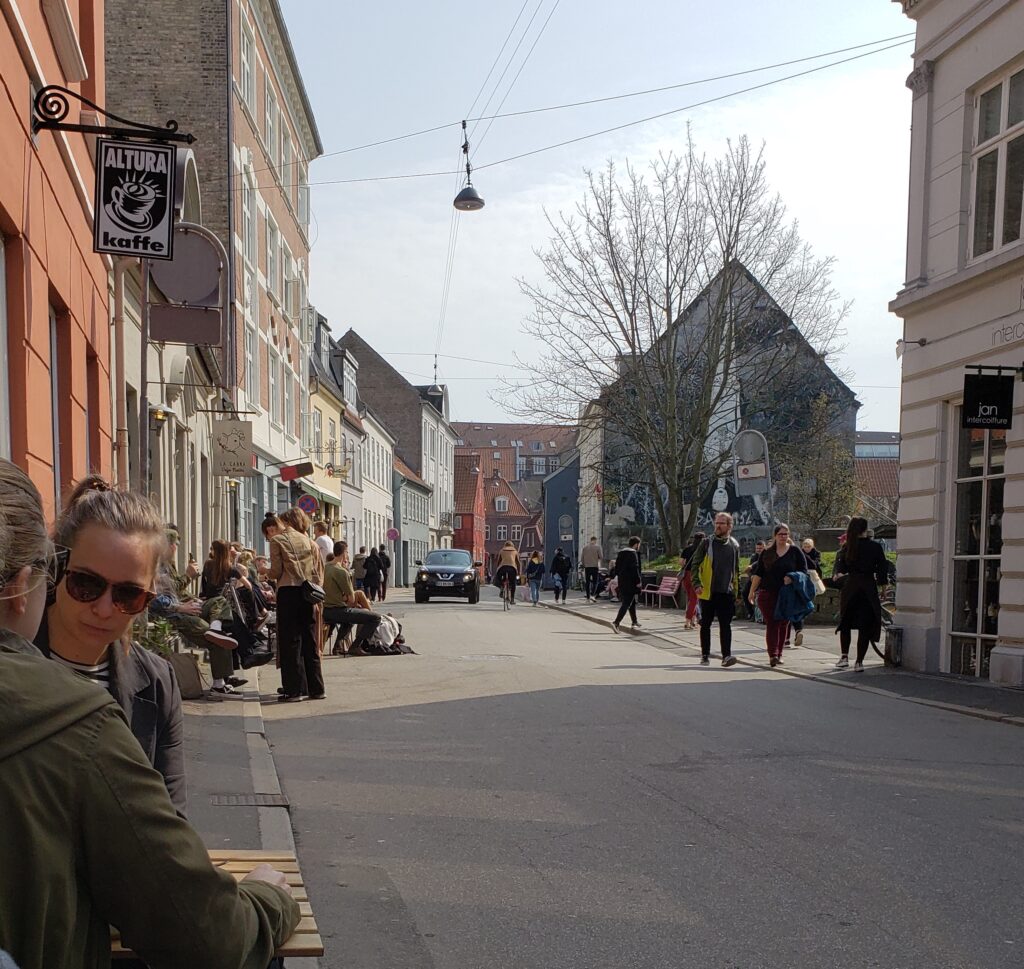I arrived in Copenhagen on Friday 4/5, about midday. I had flown here on KLM, the Dutch Airline, and through the haze of transatlantic overnight flight exhaustion, was greeted with this cup of coffee. Note the bicycle.

There is a friendly rivalry between the Danes and the Dutch about which country (and cities within each country) is/are the more bike friendly. Both countries have closely identified themselves on the international scene with bicycle urbanism and the creation of good cities through prioritizing bicycling as an an everyday practice. They have both worked hard during the past decade and a half or so to position themselves globally as knowledge creators eager to spread best practice models of bicycle policy implementation through ideologies like “Copenhagenize” and the Dutch Cycling Embassy.
I won’t take any sides here, but will say that most Americans, when they arrive in a city like Amsterdam or Copenhagen are taken aback by the sheer visibility of bicycles and people riding them. It seems to strain credibility that contemporary urban life can be grounded in the bicycle, for so many people. And in Copenhagen, those people are women (who are the majority of bicycler users).
And the American sense of urban order is destabilized, by cyclists wizzing by or stacking up at intersections in large numbers, such as this late afternoon scene near the train station in Copenhagen, on an important artery road:

Or by scenes like this, of bicycles strewn, seemingly willy-nilly on sidewalks that are already perilously narrow:

In Copenhagen bike racks around buildings proliferate, but the Danish idea of bike parking also involves parking a bicycle nearest to where you want to be. It is enabled by a particular kind of lock system on the rear wheel that prevents the bicycle from being ridden off (though not carried off, the suspicious American recognizes). This way of parking bicycles can force the pedestrian to take to the street, which can produce discomfort, a nagging sense that you’re doing something wrong, dangerous, even illegal…because the street is automobile, not people, space. But the relationship between people, bicycles, cars, and urban space is more complicated.

On small streets like this, cars are considered heavy and dangerous and the responsibility on the driver is to be careful. It leads to an interesting choreography I saw play out in Aarhus this morning, in the picture above, in which people sitting in a cafe spill out on to the street, bicyclists and pedestrians are coming and going, and periodically a car moves through. But the driver does it slowly and almost gingerly, swerving here and there to avoid walkers, people sitting in the street, and bicycle riders.
It’s not that either Denmark or the Netherlands are some kind of special Valhalla where there aren’t also very unfriendly, fast moving roads where cars dominate (I’ve seen plenty of those, not too far from where this picture is taken). And in the areas where bicycles are most common, as a pedestrian you have be hyper-aware of bicycle riders moving very swiftly from behind. But as far as first encounters go, most Americans are likely to experience a combination of pleasure, awe, and disorientation at seeing these kinds of things…